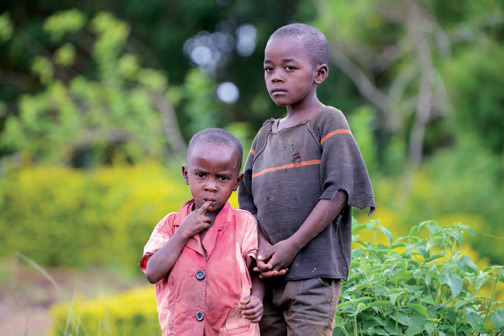Nearly 40% of HIV-positive children in Zimbabwe remain undiagnosed
Click Here to Manage Email Alerts

HIV testing through local clinics failed to diagnose more than one-third of HIV-positive children in Zimbabwe, highlighting the need for community-based approaches to reach the UNAIDS goal of diagnosing 90% of children and adolescents living with HIV by 2020.
“HIV testing for HIV-exposed infants is available as part of prevention of mother-to-child HIV transmission programs, but only 51% of HIV-exposed infants access early infant diagnosis in high-burden countries, and diagnosis mainly occurs in health care facilities when children present with symptomatic disease in later childhood and adolescence” Victoria Simms, PhD, from the MRC Tropical Epidemiology Group at the London School of Hygiene and Tropical Medicine, and colleagues wrote.
To examine the burden of undiagnosed HIV infection in older children and adolescents and its change after implementing provider-initiated testing and counseling in Zimbabwe, the researchers conducted a representative cross-sectional survey that included children between 8 and 17 years. The children all resided in seven communities and were under the care of included primary health clinics that had 2 years’ exposure to provider-initiated testing and counseling.

A questionnaire was completed by caregivers to determine knowledge of HIV status, and oral mucosal transudate (OMT) tests were used to anonymously test participants. One false-negative result was observed in a patient receiving antiretroviral therapy, so the researchers began testing urine samples for antiretroviral drugs in addition to OMT tests to confirm the children’s status. Positive tests were related to survey participants through gender, birthdate and location.
Of the participants included in the study (n = 7,146 children; 4,251 households), 76.8% participated in the survey, and 141 demonstrated HIV-positive results. Prevalence was observed at 2.6% (95% CI, 2.2%-3.1%), and 37.7% were undiagnosed (95% CI, 29.8%-46.2%. It was observed that 34.7% of those who received urine samples (n = 2,643) were also undiagnosed and living with HIV infection.
The researchers determined that through provider-initiated testing and counseling over 2 years, the coverage provided identified 18% to 42% of HIV-positive children and teenagers within the community.
“It is likely that children more prone to infections had been diagnosed prior to the study at primary or secondary care clinics,” Simms and colleagues wrote. “Children with undiagnosed HIV infection may be those who have few obvious risk factors such as orphanhood and fewer symptoms, making them less likely to present at health care facilities.” – by Katherine Bortz
Disclosure: The researchers provide no relevant financial disclosures.
